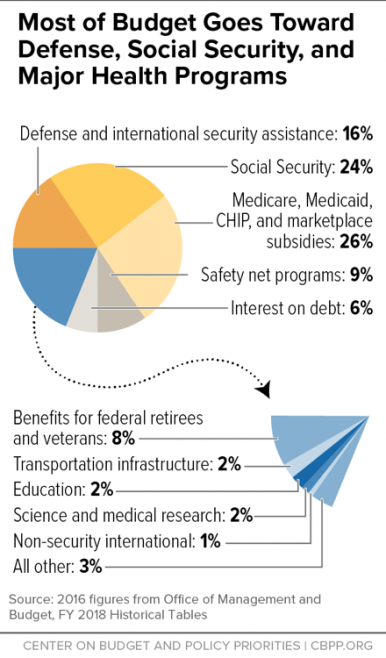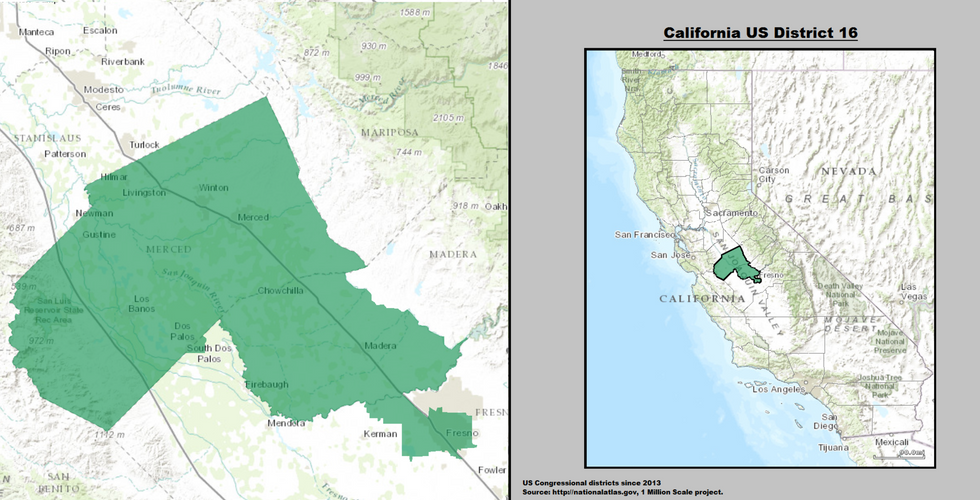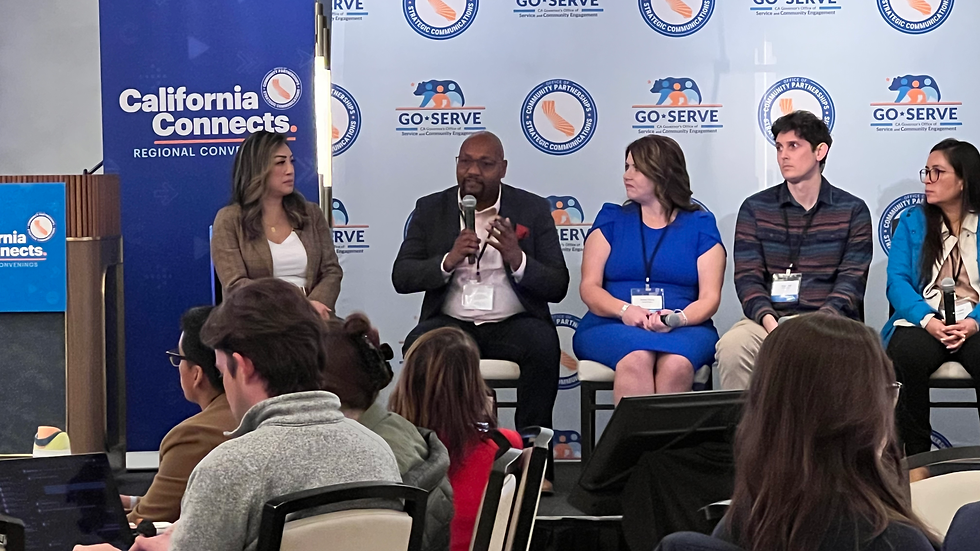A battle of vicious words becomes the scapegoat for some farmers who want to oust mayor of Tulare, C
- INFO-MD Staff

- May 31, 2018
- 9 min read

TULARE, CA—The $46 billion agriculture industry in California is a profession of norm in the Central valley; supporting local farmers would only make sense to the average person who lives here.
Current Tulare, Ca mayor, Carlton Jones, the first mayor of color, is under fire for disjointed comments recently exploited in the media for having said words thought to be against local farmers; some of these angry individuals want to see him out of the mayoral seat because of it--not based on his current performance as the mayor of Tulare.
While Jones’ comments were in response to Facebook friend Kayla Wilson’s personal page posts in regards to a Gov. Jerry Brown article supposedly restricting agriculture and water supplies to Valley farmers, the context of Jones’ comments came after Wilson commented that Gov. Brown is giving money to the welfare system, obliterating the agricultural system in California.
Paraphrased, Jones went on to comment that although Governor Brown is out in December, there are issues in agriculture that have to be dealt with and monitored, the two biggest concerns being the air and water pollution from cancerous pesticides that are floating in the air into neighborhoods and into the groundwater supply, according to research articles he read from the Western Center for Agricultural Health and Safety at UC Davis.
Wilson, then posted Jone’s comments to her brother, Erik Wilson’s Facebook page. Dos Palos resident and prominent farmer, Erik Wilson, then posted his response too, along with Jone’s screenshotted comments to his “My Job Depends on Ag” Facebook page which has over 81,000 followers:
“Here’s your mayor Tulare. Tulare, Ca home to the World Ag Expo. The most productive agricultural county in the entire USA. Tulare Ag generates more dollars alone than some states do. And this is your mayor? What a complete moron,” posted the brother, Wilson.
Since the heavy, debatable exchange of words between Jones and brother, Wilson, Wilson has since then deleted his posted responses to Jones that made reference to “making sure Jones was going to be in the unemployment line and on welfare,” according to Jones. Jones also said that his war of words were directed toward the derogatory comments coming from the brother, Wilson.
The overshadowed concern: Do deadly health hazards matter in Central Valley farming?
What may be lost in translation and conversation due to the unfriendly tone of the comments between the two men are the continued studies in the agricultural industry regarding the health hazards affecting families throughout the Central Valley.
As negative responses outpour from farm owners and families who have resided in the Central Valley for generations, disgusted by Jone’s local media sound bites and Jones’ fragmented Facebook comments, the truth is the awareness of some of the health and environmental hazards of farming is crudely swept under an invisible rug, allowing for the symptoms to expose themselves without a reference.
The main culprit of these dangerous health hazards?
To Jones’s point expressed during the social media exchange, the use of cancer-causing pesticides to ward off unfriendly bugs that destroy farmer’s crops and income has its downside; from cancer to Valley fever, the side effects are apparent and public information. The agricultural industry in California is not regulated when it comes to these type of major details.
In 2017, the pesticide use data released by the California Department of Pesticide Regulation found that the use of hazardous agricultural pesticides in California increased by 23 million pounds (12%) in 2015 over the prior year to a staggering 213 million pounds. This is the second highest use recorded since 1990 when reporting began. Almost half of the statewide total — 100 million pounds — was used in four San Joaquin Valley counties: Fresno, Kern, Tulare and San Joaquin (Pesticide Action Network.) There was a sharp increase in the use of two carcinogenic pesticides, Telone and metam potassium, known to drift away from the fields to neighboring houses and schools.
According to an NBCBayArea.com May 10, 2017 article, as many as 1 million Californians, mostly in the farming communities of the Central Valley have dangerous levels of an unregulated chemical linked to cancer in their drinking water, according to California’s State Water Board: state water officials found potentially harmful levels of “1,2,3-TCP”, or Trichloropropane, in drinking water sources across the state all the way back in 2001.
The article continued to explain how Shell & Dow Chemicals had been selling the soil fumigants with TCP since the 1950s; dangerous levels of TCP have since then seeped into the groundwater in 94 different public water systems in the Central Valley, even though it was taken off the shelves by the 1980s. In fact, high levels of TCP have also been found in 3 public systems in San Mateo, Santa Cruz and Monterey counties.
These two companies are still fighting in court against being responsible for cleaning up these areas, where mostly underserved farming communities are being affected because the state did not have a maximum legal limit set for TCP in drinking water; they lost a case to such a claim in Clovis, CA ruling against them in 2016, awarding the city almost $22 million in damages.
The debate: Are farming subsidies a form of welfare?
In regards to the controversial Facebook comments comparing farm subsidies to the welfare system, an agricultural subsidy is a governmental subsidy (aid) paid to agribusinesses, agricultural organizations and farms to supplement their income, manage the supply of agricultural commodities, and influence the cost and supply of such commodities. These subsidies and insurance cost the U.S. taxpayers more than $20 billion annually, according to the U.S. Government Accountability Office.
The welfare system cost taxpayers about $366B annually (9 percent of the federal budget), according to October 4, 2017 article by Center on Budget and Policy Priorities, Policy Basics: Where Do Our Federal Tax Dollars Go?

These are called “Safety net programs” that provide aid (other than health insurance or social security benefits) to individuals and families facing hardship which include: the refundable portions of the Earned Income Tax Credit and Child Tax Credit, which assist low- and moderate-income working families; programs that provide cash payments to eligible individuals or households, including Supplemental Security Income for the elderly or disabled poor and unemployment insurance; various forms of in-kind assistance for low-income people, including SNAP (food stamps), school meals, low-income housing assistance, child care assistance, and help meeting home energy bills; and various other programs such as those that aid abused and neglected children. However this assistance has kept over 36 million people throughout the United States out of extreme poverty, according to the article, where over 25% of Americans would have been considered below the poverty line versus 14% in 2016.
According to March 1, 2018 article by Deborah White, What Are U.S. Farm Subsidies? Some Say Corporate Welfare, Others a National Necessity, the original intent of U.S. farm subsidies was to provide economic stability to farmers during the Great Depression to ensure a steady domestic food supply for Americans.
In 1930, according to the USDA Census of Agriculture Historical Archive, nearly 25 percent of the population, or roughly 30,000,000 people, lived on the nation's nearly 6.5 million farms and ranches, a number that has dropped considerably today—a reason some debate that the agriculture industry is no riskier than many other industries, and does not need an array of federal subsidies.
This same article explained that the U.S. government presently pays about $25B in cash annually to farmers and owners of farmland; however, according to the Cato Institute, the largest 15 percent of farm businesses receive 85 percent of the subsidies; these overwhelming statistics is backed by The Environmental Working Group database which tracked $349 billion in farm subsidies paid between 1995 and 2016.
This indicates that the majority of subsidies do not go to helping small family operations, the primary beneficiaries are instead the largest producers of commodities like corn, soybeans, wheat, cotton, and rice, as research by the EWG Farm Subsidy Database (EWG):
“Despite the rhetoric of ‘preserving the family farm,’ the vast majority of farmers do not benefit from federal farm subsidy programs and most of the subsidies go to the largest and most financially secure farm operations. Small commodity farmers qualify for a mere pittance, while producers of meat, fruits, and vegetables are almost completely left out of the subsidy game (i.e. they can sign up for subsidized crop insurance and often receive federal disaster payments),” according to EWG.
According to the EWG database, from 1995 through 2016, seven states received the lion's share of subsidies, nearly 45 percent of all benefits paid to farmers:
Texas - 9.6%
Iowa - 8.4%
Illinois - 6.9%
Minnesota - 5.8%
Nebraska - 5.7%
Kansas - 5.5%
North Dakota - 5.3%
In the April 16, 2018 article, Agricultural Subsidies, By Chris Edwards, he stated that the EWG found that 50 people on the Forbes 400 list of the wealthiest Americans received farm subsidies.32
“Today, the largest pot of subsidies is channeled through insurance companies, which hides the identities of recipients, as noted.33 However, the Government Accountability Office found that at least four recipients of crop insurance subsidies have a net worth of more than $1.5 billion.34”
According to a San Francisco Gate article, although, California has been the top farm state by revenue since 1948, growing more than 400 crops of mainly fruits, nuts and vegetables, (roughly 11% of the country’s total) Congress largely ignored fresh produce when it established subsidies for corn, wheat, cotton and other storable commodities during the Great Depression. To this day, California growers operate in highly competitive markets without the direct subsidies and price supports that commodity-crop farmers enjoy.
In fact, 91 percent of farms in California did not collect subsidy payments, according to the USDA, due to drought conditions or the lack of access to water, driving these farmers out of business for good, according to local USDA representative, Dr. Ken Grimes.
California ranks 12th in receiving farm subsidies; however, Fresno County ranks number one and Tulare ranks number three in receiving those subsidies, amounting to a little over $2.2B with just those two counties, (Kern county is number two, receiving a little over $2B.)
The comments: What was Jones really trying to say?
From misinformation to the war of words, the context of both sides of the argument seemed lost in perspectives.
According to Jones, his comments were never a reference to degrading the agriculture industry or discrediting the Valley’s long history in farming; he was more avid about taking the next step to insure the health safety of all families who reside in the Central Valley as well as the natural ecosystem, finding ways to enhance the systematic routines of farmers through technology. His founding come directly from a UC Davis study.
“The biggest pollutant, especially in the water supply, that is affecting the health of families throughout the Central Valley is the amount of nitrates coming from the fertilizer used on the farmed crops according to a number of studies conducted by UC Davis,” said Jones.
“We have to find profound technologies and strategies to reduce the unregulated high levels which are showing their effects through the high number of Central Valley residents who have contracted Valley Fever, asthma and cancer. These diseases and illnesses are directly related to the contaminates that have reached the ground water or have traveled through the unsettled dust from pesticide treatment on farmlands throughout the Valley. This is not a slight on the farming industry; we have to think of better solutions to revolutionize the agriculture industry which would assist our local farmers, while at the same time protecting the health of our Central Valley residents.”
According to the UC Davis AgCenter article, people who work outdoors in California’s Central Valley and other locations, especially workers who dig or disturb soil, like agricultural workers, are at risk for Valley Fever. Valley Fever (also called coccidioidomycosis) is caused by inhaling fungal spores found in the soil in certain parts of California. It is a serious illness that can cause disability or even death.
Below, the chart shows CalEnviroScreen 2.0 Pollution Burden Indicators
From a farmers perspective, they too have challenges unbeknownst to the general public, from lack of access to water due to political strife, dealing with near drought conditions and the rising cost of water, decreasing acres of land to lease due to urbanization, and trying to compete against larger/corporate farms in price wars in the consumer and commercial markets.
Central Valley residents have a chance to hear for themselves from the Tulare mayor, Thursday night, May 31 at an open town hall meeting and dialogue to be held at the Tulare Senior Center, 201 N F St. from 7-9pm (RSVP, space is limited: frez_483@yahoo.com.) On Tues., June 5 at the Tulare City Council meeting at 7:00 PM, members of the public are allowed to say 3-minute comments, but the council is unable to respond to those comments.
Sources
1. Nearly a Million Californians Exposed to Pesticide Chemical Linked to Cancer in Their Drinking Water - May 10, 2017: nbcbayarea.com
4. California Today: A Big Boost for Jerry Brown’s Elusive Water Project - April 11, 2018: nytimes.com
7. Policy Basics: Where Do Our Federal Tax Dollars Go? by Center on Budget and Policy Priorities, October 4, 2017: https://www.cbpp.org/research/federal-budget/policy-basics-where-do-our-federal-tax-dollars-go
Watch Jones' sponsored Tulare, CA town hall meeting with the community





















Comments